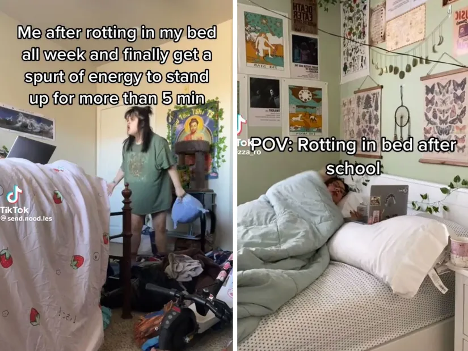Celebrities are people who must carefully choose everything they do to avoid controversy. The weight of having your entire life being watched takes a toll on your mental health, especially if you have a mental disorder already. Selena Gomez is one of those celebrities who struggle with a mental disorder. She has spoken publicly about her having bipolar disorder and being put into a psychiatric hospital. Many thoughts plagued her mind leaving her not wanting to be alive. Her speaking about her experience also encouraged others to speak about their experiences. Many people have gone to social media to share their struggles with mental health. Some of these people have become famous and gotten thousands of followers. Seeing this success, some pretend to have mental disorders to become famous as well. While others have seen so many people speak out and get millions of views. They want success so they will fake having a mental illness by looking up symptoms and pretending to have them. People who see these videos might relate to them and believe that they have that disorder as well without a proper diagnosis.
Many videos on TikTok explain symptoms of a mental disorder and someone who sees that video might self-diagnose themselves with that disorder. A TikToker who goes by the handle ‘kai8seasons’ self-diagnosed himself with ADHD after he saw a video he related to. Since then, his whole account has been about his ADHD which he hasn’t been officially diagnosed with. All his newer videos have been about managing ADHD. He’s gained a massive following of over 139 thousand from his posts about his “ADHD.” He truly believes he has ADHD because he related to one video about ADHD and decided that he has it from that feeling of relatability. This happens very often when someone sees a video about a certain disorder that they relate to think they have it. The disorder they think they have might become their whole personality because it’s ‘cool’ now in society to have certain mental disorders.

On TikTok, a trend called ‘bed rotting’ has started to circulate. In this trend, the person lays in bed all day doing nothing and relaxes. However, people who experience actual bed rotting find it very debilitating. It causes them not to be able to leave their bed for long periods. Some can’t even leave their bed to go to the bathroom until they can no longer hold it. Food will rot, drinks will mold, and their room might even become infested with bugs. Seeing their room in such a state and unable to even get up to clean it will make their mental health decline further. However, they are physically unable to get up because mentally they can’t bring themselves todo so .
Part of the issue of glamorization is how the media portrays mental illness. Many shows have scenes about suicide like “Criminal Minds.” These scenes are often romanticized and glamorized with the danger that people might commit imitation suicide. A researcher analyzed Twitter discourse about the glamorization and romanticization of mental illness. They concluded that as younger kids are getting exposed to the internet and technology faster, they will find shows that have an inaccurate portrayal of mental illness. Seeing this they might want to have mental illnesses without even knowing what it’s like. There are many videos about young kids and teenagers killing themselves because they saw it on TV and wanted to try it.
During May, which is mental health month, many schools and organizations focus on bringing attention to mental health/illness. Usually, they do this by talking about symptoms of different mental illnesses, but people who haven’t experienced it will never know what it’s like. It’s like how you won’t know the pain of a heart attack until you feel it. No one will understand the struggle people go through with their mental health until they experience it themselves. That’s why mental illness is so glamorized. People who don’t know what it’s like to have a certain mental illness will act differently from people who have that mental illness. Young kids will see those videos and will have a romanticized vision of mental health. When these kids come across someone with mental illnesses, they will feed into the stigma that people with mental disorders are lazy and sometimes scary.





